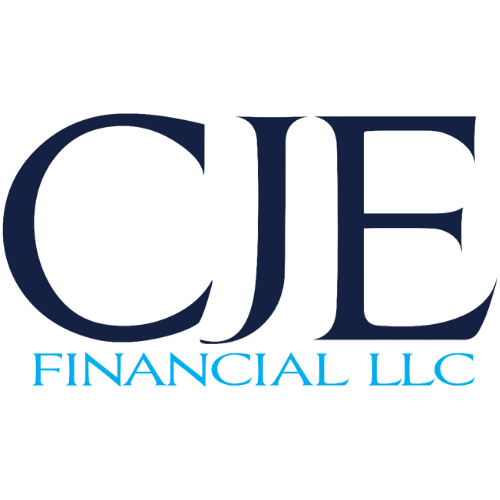How Does a High Interest Rate Environment Typically Affect the Markets?
Markets have been known to “choke on the prospect of higher interest rates.” Part of this reaction is by design: many investors adjust their portfolios, shifting away from stocks and toward traditional safe-haven investments such as bonds or CDs as yields rise, reducing excess liquidity from the stock market. (1)
Rising rates could signal an overly aggressive Federal Reserve, potentially slowing economic growth and possibly pushing the economy into a recession. Concerns surrounding the Fed led to significant stock market declines in 2022, with the S&P 500 experiencing its worst performance since 2008. (1)
As we dive into a new year, let’s explore what we may expect from a high interest rate environment.
Limited Consequences for the Broader Stock Market
In the closing months of 2024, the stock market showed relatively limited reactions to a mixed interest rate environment. Between September and December, the Federal Reserve's benchmark rate (the rate at which banks lend to each other overnight) increased by 1%. While Fed rate cuts are generally positive for equity investors, long-term bond yields, such as the 10-year U.S. Treasury note, rose during this period, creating challenges for certain interest rate-sensitive sectors. (2)
As a result, equity market performance in the fourth quarter leveled off, but the S&P 500 still ended the year with a positive return, as equity investors appeared to focus more on factors other than interest rate trends. (2)
Interest Rates Affect Sectors Differently
At its December 2024 meeting, the Fed revised its expectations for rate cuts in 2025. While initial projections indicated a 1% reduction in the Fed funds target rate by the end of 2025, the December forecast lowered the expected cuts to 0.50%. A less accommodative Fed could raise concerns in the equity markets because corporate borrowing costs may not decrease as quickly as expected, potentially affecting corporate earnings. (2)
Higher rates tend to be more problematic for smaller companies that often have shorter-duration borrowings and require more frequent refinancing. Other sectors sensitive to interest rates, such as utilities and real estate, have also faced challenges due to rising Treasury bond yields. (2)
When Fed rate cuts were anticipated in the third quarter, small-cap, utilities, and real estate stocks performed well, but the subsequent rise in long-term bond yields negatively affected overall performance in the fourth quarter. (2)
Increased Borrowing Costs
Interest rate hikes typically make borrowing more expensive, which can discourage consumers from making large purchases and companies from hiring or investing. While these trends may eventually help alleviate inflationary pressures, the effects often take time to manifest. (3)
As higher rates begin to affect the economy, the threat of a recession may emerge. However, opportunities may remain for savers and for stocks in certain sectors as rates approach their peak. (3)
Savers could benefit as interest-bearing investments, such as cash accounts and short-term bonds, may offer higher yields. Even longer-term bonds may become more attractive as rates rise. (3)
Unfortunately, many borrowers, including first-time homebuyers and college graduates, may suffer during the later stages of a rate-hike cycle. (3)
On the business side, high-yield bond issuers may be at greater risk from higher rates, and stocks in high-growth industries, such as information technology, may struggle as borrowing costs remain high and revenue growth slows. (3)
Effects on the Job Market
Higher interest rates can have a significant effect on the job market, as expansions that seemed feasible when financing was cheap may be delayed or scaled back. New job opportunities that were possible due to low interest rates may be no longer available. (1)
The job market has shown clear signs of cooling since the Fed began raising rates. The nation's unemployment rate has remained above 4% since May, currently at 4.1%, after reaching a low of 3.4%. Employers have created an average of about 132,000 jobs over the past six months, a decrease from the previous six-month average of 236,000. Meanwhile, the number of job openings has fallen to 7.4 million in September, down from a peak of 12 million in March 2022. (1)
Calibrating Interest Rates vs. Stimulating Growth
High interest rates are primarily aimed at curbing inflation by discouraging consumer spending, particularly for items requiring financing. However, these higher rates can also increase joblessness if they slow the economy too much. Without a paycheck, consumer purchasing power diminishes, further impacting demand. The Fed is tasked with balancing the need to control inflation without slowing economic growth too drastically. (1)
Unlike periods such as the Great Recession or the coronavirus pandemic, when rate cuts were intended to stimulate growth, the Fed's current approach may aim to calibrate interest rates in response to a stable, but slowing, economy to maintain a strong financial system. (1)
Article Sources:
(1) Foster, Sarah. “6 key ways the Federal Reserve impacts your money.” Bankrate, December 16, 2024.
(2) “How do changing interest rates affect the stock market?” U.S. Bank, January 3, 2025.
(3) Jones, Kathy, and Kevin Gordon. “The Potential Winners and Losers of Higher Interest Rates.” Charles Schwab, October 16, 2023.

